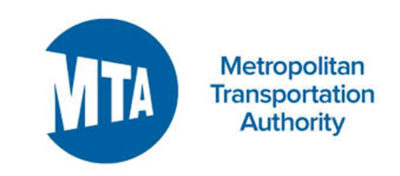The MTA announced that the next 20-Year Capital Needs Plan Assessment (2025-44) will be completed by Oct. 1, 2023. They said “Engaging with the public and understanding the needs of our riders is critical to plan for the future of the transit system.” What ever happened to the MTA 2020-40 20-Year Capital Needs Plan? In 2019, the State Legislature directed the MTA to release this document prior to adoption of the $51 billion 2020-24 Five Year Capital Plan.
Based upon my knowledge of the MTA and previous experience working for the Federal Transit Administration (FTA), here are the most recent cost estimates for the following system expansion and enhancement projects that the MTA is considering to include in the next 20-Year Plan.
The current growing inflation, potential recession, ongoing supply chair issues, increasing fuel prices, rising material costs and labor shortages will only result in cost estimates going up over coming years, prior to award of any construction contracts for these potential projects.
(1) NYC Transit Manhattan 10th Avenue station on the #7 Flushing Line-$1 billion; (2) Metro North Rail Road Danbury-Southeast connection-Requires financial support from Connecticut Department of Transportation-$1 billion or more; (3) Extension of the Brooklyn New Lots Ave #3 line-billions; (4) MNRR Harlem Line capacity improvements-$1 billion; (5) MN Hudson Line connection to Penn Station-$1 billion; (6) Brooklyn/Queens Interborough Express-MTA Chairman Janno Lieber promised it would come in under $10 billion; (7) MNRR Inner New Haven Line yard-several hundred million-Requires financial support from CONNDOT; (8) Long Island Rail Road Elmhurst Station-$40 million; (9) Brooklyn Myrtle Avenue busway-$20 million; (10) LIRR Port Jefferson Branch improvements – $3.8 billion to fully electrify from Huntington to Port Jefferson stations; (11) MNRR Port Jervis Line capacity improvements-several hundred million; (12) LIRR electrification – Oyster Bay, east of Ronkonkoma to Greenport and east of Babylon to Speonk or beyond to Montauk combined-$5 billion or more; (12) Reactivation of the LIRR Lower Montauk Branch-$2.1 billion; (3) Reactivation of the LIRR Rockaway Beach Branch-$8 billion; (14) Second Avenue Subway Phase 2 to 125th Street-$6.9 billion; (15) Second Avenue Subway, Phase 3 south to Houston Street-$10 billion; (16) LIRR Speonk-Montauk capacity improvements-$1 billion or more; (17) Staten Island North Shore transit-Bus Rapid Transit Improvements-$600 million; (18) Staten Island West Shore BRT-$1.5 billion; (19) LIRR Sunnyside and Long Island City transit improvements-$600 million plus cost of LIC improvements; (20) Brooklyn Utica Avenue transit improvements-$5 to $10 billion depending upon length of the subway extension and number of stations (21) Brooklyn W subway line extension to Red Hook-$2.9 billion; and (22) MNRR West of Hudson Regional Transit Access Study, Stewart Airport Link-billions;
Not included was reopening the LIRR Atlantic Branch Woodhaven Station at a cost of $40 million closed in 1978. Also, reopening the Flushing Intermodal Bus Terminal at a cost of $100 million closed in 1954 and double tracking LIRR Port Washington branch between Great Neck and Port Washington-costs to be determined…
The MTA will evaluate this list of projects. They have not been selected or funded but will be comparatively evaluated for consideration on a level-playing field for future Five Year Capital Programs. Why the need to evaluate the $6.9 billion Second Avenue Phase 2 project?. MTA has previously said that based upon receipt of a Full Funding Grant Agreement from the Federal Transit Administration, construction would start in 2023.
Many of these projects would have to be admitted into the FTA Capital Investment Grant (CIG) national competitive discretionary system expansion core capacity program. They would be competing against others for future federal funding.
It should be a higher priority for each operating agency including NYC Transit bus, subway and Staten Island Railway, MTA bus (the old private NYCDOT franchised bus operators taken over by MTA in 2005), LIRR and MNRR to first reach a state of good repair for existing fleet, stations including making all ADA accessible, signals, interlockings, track, power, yards and shops. The same is true for ensuring that maintenance programs for all operating agencies assets are fully funded and completed on time to ensure riders safe and reliable service
Larry Penner is a transportation advocate, historian and writer, who previously worked for the Federal Transit Administration Region 2 New York Office. This included the development, review, approval and oversight for billions in capital projects and programs for the MTA, NYC Transit, Long Island Rail Road, Metro North Rail Road, MTA Bus along with 30 other transit agencies in NY & NJ.


















